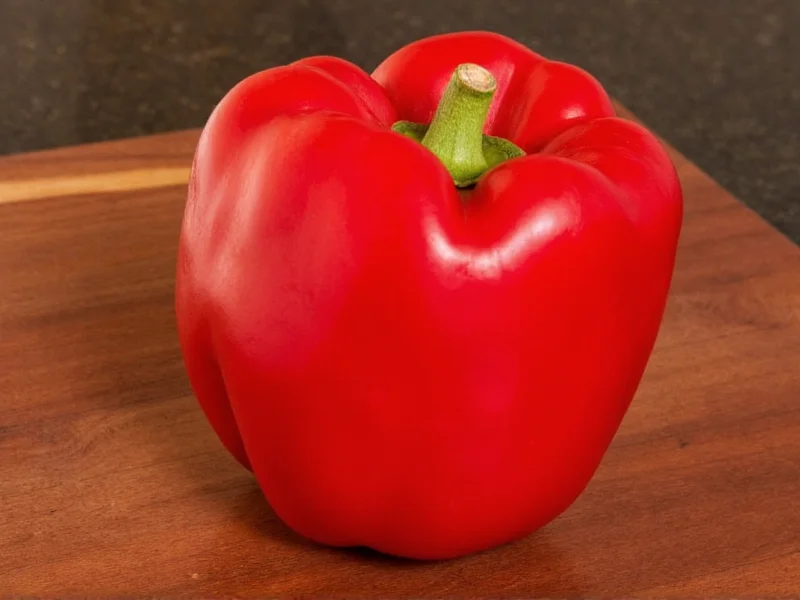Roasting red peppers transforms their flavor from mildly sweet to deeply caramelized and complex. Unlike gas stove or grill methods, oven roasting provides consistent, hands-off results ideal for beginners and experienced cooks alike. This technique works for bell peppers of any color, though red peppers offer the sweetest, most robust flavor profile due to their extended ripening time.
Why Oven Roasting Outperforms Other Methods
While many home cooks reach for the gas flame, oven roasting delivers more controlled, even results without requiring constant attention. The enclosed environment ensures consistent heat distribution, preventing uneven charring that often happens with open-flame methods. This approach particularly benefits those without gas stoves or outdoor grilling space, making professional-quality roasted peppers accessible to everyone.
Equipment You'll Need
Before starting your red pepper roasting process, gather these simple kitchen tools:
| Item | Why It Matters |
|---|---|
| Baking sheet | Provides even heat distribution for consistent roasting |
| Parchment paper | Prevents sticking and simplifies cleanup |
| Sharp knife | For precise stem removal if desired |
| Plastic bag or bowl with lid | Creates steam environment for easy peeling |
| Thin kitchen towel | Protects hands during peeling process |
Step-by-Step Roasting Instructions
Preparation Phase
Start by washing your red peppers thoroughly under cool running water. Pat them completely dry with a clean kitchen towel—moisture creates steam that prevents proper charring. Place whole peppers on a parchment-lined baking sheet, leaving space between them for air circulation. For best results when roasting multiple red peppers in oven, arrange them vertically on their sides rather than flat.
Perfect Roasting Temperature and Timing
Preheat your oven to 425°F (220°C)—this optimal temperature for roasting red peppers ensures thorough charring without burning. Roast for 20-30 minutes, rotating the pan every 10 minutes until all sides develop deep black char marks and the flesh becomes tender. The exact time varies based on your oven and pepper thickness, so watch for visual cues rather than relying solely on the clock.
Steaming and Peeling Technique
Immediately transfer roasted peppers to a sealed container—a glass bowl covered with plastic wrap works perfectly. Let them steam for 10-15 minutes; this critical step loosens the skin for effortless removal. When handling hot peppers, use tongs or wear thin cotton gloves to protect your hands. Gently rub off the charred skin under cool running water, preserving as much flesh as possible.
Pro Tips for Flawless Results
- Don't remove seeds before roasting—keeping seeds intact maintains pepper structure during cooking
- For deeper flavor, add a light drizzle of olive oil before roasting to enhance caramelization
- Prevent over-charring by watching closely during the final 5-10 minutes of cooking
- Save the juices—collect flavorful liquid from the baking sheet for sauces or dressings
- Uniform sizing matters—roast similarly sized peppers together for even results
Avoid These Common Roasting Mistakes
Many home cooks struggle with roasted red peppers due to preventable errors. Don't open the oven door frequently during roasting—this drops the temperature and extends cooking time. Never skip the steaming step, as this makes peeling difficult and damages the tender flesh. Avoid using sharp objects to remove skin, which creates holes that collect water and diminish flavor. Finally, don't roast peppers at too low a temperature, as this steams rather than chars them, resulting in bland, watery texture.
Storing and Using Your Roasted Peppers
Properly stored roasted red peppers maintain quality for up to one week refrigerated or six months frozen. For short-term storage, place peeled peppers in an airtight container with a thin layer of olive oil. When freezing, arrange peppers in a single layer on a baking sheet before transferring to freezer bags to prevent clumping. The best way to store roasted red peppers long-term involves submerging them in olive oil with garlic and herbs for enhanced flavor.
Use your oven-roasted peppers immediately in salads, sandwiches, pasta dishes, or as pizza toppings. They blend perfectly into sauces, dips, and spreads. For a quick appetizer, stuff roasted peppers with goat cheese and herbs. The versatile flavor complements eggs, meats, and grain bowls. When following recipes calling for roasted red peppers, this oven method delivers consistent results every time.
Frequently Asked Questions
Can I roast red peppers without blackening the skin?
While some charring is essential for proper flavor development and easy peeling, you can minimize excessive blackening by reducing oven temperature to 400°F (200°C) and checking frequently after 15 minutes. The skin should develop dark spots but not completely blacken in any single area.
Why won't my roasted red pepper skins peel off easily?
Peeling difficulties usually indicate insufficient steaming time. After roasting, let peppers steam in a covered container for 10-15 minutes to loosen the skin. If still problematic, briefly return them to the oven for 5 more minutes before steaming again. Never skip the steaming step when learning how to roast red peppers properly.
How long do roasted red peppers last in the refrigerator?
Properly stored in an airtight container with olive oil, roasted red peppers maintain freshness for 5-7 days in the refrigerator. Check for any off smells or slimy texture before using. For longer storage, freeze them for up to 6 months without significant quality loss.
Can I roast multiple peppers at once in the oven?
Yes, you can roast several red peppers simultaneously, but avoid overcrowding the baking sheet. Leave at least 1 inch between peppers for proper air circulation. If roasting more than 6 peppers, use two baking sheets and rotate their positions in the oven halfway through cooking for even results.
Should I remove seeds before or after roasting red peppers?
Leave seeds intact during roasting to maintain the pepper's structure. Remove seeds along with the membrane after roasting and peeling, as they become much easier to extract once cooked. This approach preserves more flesh and prevents the peppers from collapsing during cooking.











 浙公网安备
33010002000092号
浙公网安备
33010002000092号 浙B2-20120091-4
浙B2-20120091-4